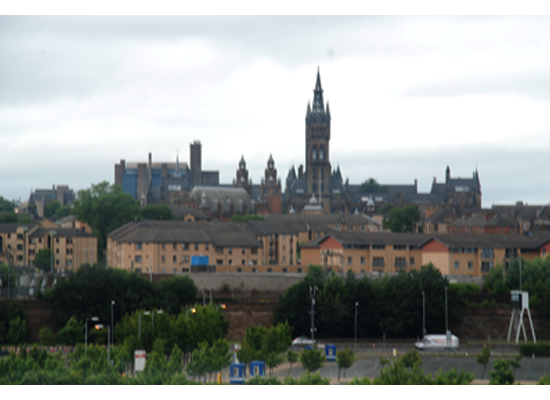Meet the scientists
18-August-2010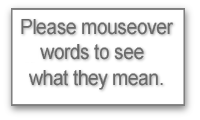
Meet the scientists
Cell biology
“All scientists are a bit annoying,” says Nia Bryant. “It's because we want to understand how everything works. I think I annoy my lab, my family, and even myself. I was always interested in how stuff works. I can’t remember not being like that.”
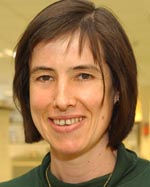 The particular cell biology stuff she and her group are currently working on has a pure and an applied side, she says, although there is a lot of overlap. “Cells are divided into compartments called organelles. So we are looking at how the cell determines the make-up of those. This is important for many processes – from secretion of hormones, such as insulin and adrenalin, to brain function and the firing of neurons. The basic question is, how does the cell organise itself internally?”
The particular cell biology stuff she and her group are currently working on has a pure and an applied side, she says, although there is a lot of overlap. “Cells are divided into compartments called organelles. So we are looking at how the cell determines the make-up of those. This is important for many processes – from secretion of hormones, such as insulin and adrenalin, to brain function and the firing of neurons. The basic question is, how does the cell organise itself internally?”
Figuring this out with experiments on mammal cells can be difficult, costly, time-consuming and ethically questionable. So Dr Bryant and her group are working with yeast as a model organism. Yeast cells are similar to our own, even though the last common ancestor of yeast and humans lived perhaps a billion years ago.
“There are a remarkable number of similarities,” she says. “We did a study last year, for instance, in which we took a yeast cell and deleted a gene that encodes a particular protein. That gave a defect in the cell. We then took the corresponding protein from a mouse cell, expressed it in those yeast cells and it corrected the problem. What that shows is that the two molecules – one in yeast and one in the mammal – are interchangeable.”
The more fundamental part of her lab’s research is studying how a particular group of proteins – the snare family – regulates the transfer of material between organelles, she says. “The other stream is working with a molecule called Glut4, which clears glucose from the bloodstream in response to the hormone insulin, by being mobilised from inside a cell to the surface.
“The two arms of my lab cross, because that movement of Glut4 from inside the cell is controlled by SNARE proteins. So we use findings from the basic science in the applied science side – which is nice for people to see possible applications for their work.”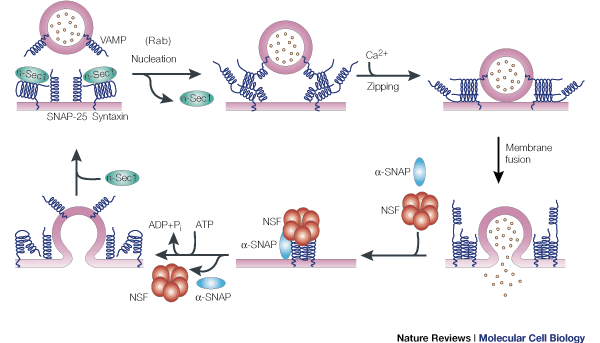
Treatment of diabetes is a long-term goal, she says. “If we can understand the movement of Glut4 in a healthy cell, it should give us insight into what is perturbed in a disease state such as diabetes.”
Important though such a discovery would be, however, the prospect is not what motivates her most. “My favourite thing in science is finding out something nobody ever knew before. It happens often enough to drive you, but not so often you become blasé”
Like most scientists she finds it difficult to work only at certain times of the day. “I do long-distance running, which is fantastic thinking time. Ideas come out of nowhere. There are many aspects to our job – research, teaching, admin – and it can get very jumbled. Running clears your head. I’m a great believer in blue skies research, because you never know where applicability will come from.
“Building up knowledge is vital. The more we know, the more we’ll be able to fix. But we don’t know in advance which knowledge will help us fix which problem.”
More help with words
| breed | complex | conception | descended from | DNA | experiment |
| familiar | fertile | fertilisation | gland | inherit | insulin |
| laboratory | membrane | molecule | organ | pancreas | prediction |
| protein | protoplasm | species | structure |
Plant circadian rhythms
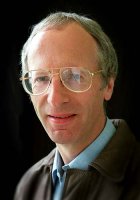
It’s not obvious to pupils in school that the aim of a science experiment is to learn something you didn’t know, says Hugh Nimmo. “I even get undergraduates in the lab wanting me to tell them what the right answer is. The whole point of an experiment is that the right answer is the one you get.”
But before getting any answers a researcher has to think of a good question. This is where most people's idea of a scientist and the real thing are very different, says Professor Nimmo. “Because what you need at that stage is imagination. So the picture of a scientist as rigid, unbending and following procedures like a robot couldn’t be further from the truth.
“Science works by people having new ideas then testing them. You take a problem, say a bit of biological behaviour, and imagine a possible explanation, in terms of things you know and some you don’t know.
“To my mind that’s as difficult as having the concept for a great novel. Hilary Mantel won the Booker Prize for Wolf Hall and her concept was that you could write a fascinating story about Thomas Cromwell, who’s usually seen as nasty individual. She saw that he rose from a low background, was educated broadly in Europe, spoke loads of languages and had lots of skills. Having that concept was a great act of the imagination.
“But thinking of possible answers to scientific problems is an exercise of the imagination of a similar nature. The difficult part of science is having the concept in the first place. The most rewarding part of science is doing the experiment and discovering you were right, and you go ‘Wow! - the world now knows something it didn’t because of something that came out of my head.’”
An example from his own research is circadian clocks – the mechanisms in plants and animals that measure the passing of time. Why are these important? Well a plant that knows when the sun will rise and gets its systems wide awake and ready to photosynthesise, as soon is the first rays come over the horizon will steal a march on its sleepier companions. This is why circadian clocks are found in all higher plants.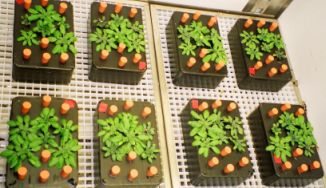
But the way these clocks work is not well understood. For a long time scientists thought all cells contained clock machinery that worked the same way but ran independently, without communication between cells or organs, says Professor Nimmo. “And there was evidence to support that. But I took a different view."
One of the main roles of the circadian clock is to control metabolism, he points out. But metabolism varies throughout the day in different organs. "So my feeling was that a leaf, say, would have a different timing requirement to a root.
He devised an experiment to test this, by looking separately at shoots and roots of Arabidopsis thaliana plants. The simplest plant clock would be a feedback loop consisting of a protein expressed by a gene that gets switched off when the protein has built up to a certain level.
In practice plant and animal clocks usually consist of several interlinked protein and gene feedback loops that have to be studied. But the principle is the same. So scientists can study clocks and their timing in any organ by taking samples and measuring the expressed protein levels throughout the day. Professor Nimmo and his colleagues used a technique for this known as quantitative real-time reverse transcription polymerase chain reaction.
The results showed very convincingly that their hypothesis was correct. There is communication between the clocks of different plant organs. This was an extremely satisfying result, says Professor Nimmo – as well as being potentially very useful. “With climate change we want to be able to change the latitude at which particular crops can grow and produce.
As the planet warms it would be nice if we could grow rice say further north. Now plants use their circadian clocks to measure how day-length changes throughout the year.”
This in turn lets them work out which season it is and when they should flower. “So if you move a strain of rice a hundred miles north - where the way the day length changes is different - it will flower at the wrong time.”
The result is greatly reduced crop yield – and maybe none at all if the plant is completely out of sync with the insects that pollinate it. “So one application of the knowledge we are gaining, using genetic engineering or even normal selective breeding methods, would be crops that grow well further north. A better understanding of circadian clocks could be very important for all of us.”
More help with words
| breed | carbon dioxide | conception | degree | DNA | environment |
| fertile | fertilisation | genes | genetic | inherit | molecule |
| organism | pollen | prediction | protein | reproductive | response |
| species | starch | tentative | trait | ||
Extreme biology
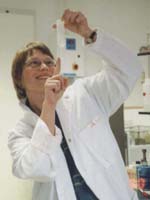
The secret to success in combining a research career in science with family life is simple, says Anna Amtmann – and surprisingly old-fashioned sounding: “Marry the right man,” she laughs.
“Or rather a man with the right job – another scientist. I had twin babies when I was a postdoc in York and both our families lived on the continent, so we had no support. I would feed my two babies then drive in, in the middle of the night, to look after my cell culture.”
“If my partner had been in industry and out working all day we wouldn’t have had the flexibility to say, ‘You stay with them for an hour while I go work, then I’ll look after them while you do.’ There’s also the acceptance of the lifestyle of a scientist – working evenings and weekends often – which can be difficult for a non-scientist.”
So what exactly is Dr Amtmann’s work? The title of one of her most popular undergraduate courses – extreme biology – covers a big chunk of it, she says. “I’m interested in how plants respond to what’s called abiotic stress, in particular lack of water and high salinity. All our crops – except beetroot which is related to a marine plant – are very sensitive to salt levels.”
Sodium is always toxic to cells, whether plant or animal, she says. “Our proteins like to be surrounded by potassium, but if you put them in a salt solution they disintegrate. But a salty environment isn’t a problem for us animals, because we’re still carrying salt water around with us in the form of blood.
“So all our cells are bathed in salt and have mechanisms to pump it out and replace it with potassium. In animals those mechanisms are the main pump for transporting other materials, such as sugars and amino acids, through cell walls.”
But when plants evolved out of the sea their transport system changed, she says. “Instead of a sodium-potassium pump across the cell wall, plants have a proton pump that works on pH gradient. So plants have forgotten how to deal with sodium. There are no higher plants in the sea – and very few on the beach.” 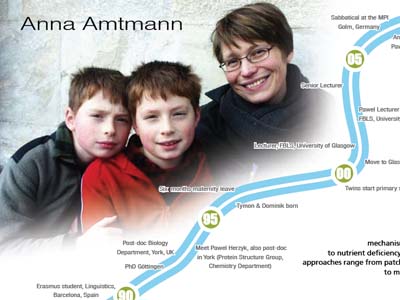
Plant scientists often work with Arabidopsis thaliana, says Dr Amtmann. “The common name is mouse-ear cress and it’s our guinea pig. Fully sequenced, everything known, great to work with. But we’ve recently started working with a closely related species called Thellungiella halophila or sea cress. This shares 90% of its genome with Arabidopsis, but it can tolerate cold, high salt concentration and low levels of nutrients. It’s a real tough cookie.”
While other plants, such as cactuses and sugar-beet, that can stand extreme conditions look very different to normal plants, little Thellungiella seems quite ordinary, she says. “It has soft leaves, fine roots, normal metabolism.”
This makes it an ideal research tool for learning what makes it naturally tolerant of conditions that would quickly kill other plants – and seeing if these can somehow be transferred to economically important crops. “We now have these amazing ways of sequencing genomes quickly.
"Biology has changed so rapidly and we are doing things people couldn’t have imagined ten years ago. Where once we looked at one gene and it took us months, we can now look at the expression of a whole genome under ten different conditions in an experiment that takes maybe two days.
“We don’t yet have the sequence for Thellungiella. But I expect we soon will.”
More help with words
| acid | acidic | alkali | alkaline | breed | cell |
| complex | compound | conception | degree | DNA | element |
| fertile | fertilisation | fundamental | gene | inherit | ion |
| membrane | molecule | particle | PhD | protein | protoplasm |
| react | salt | species |

